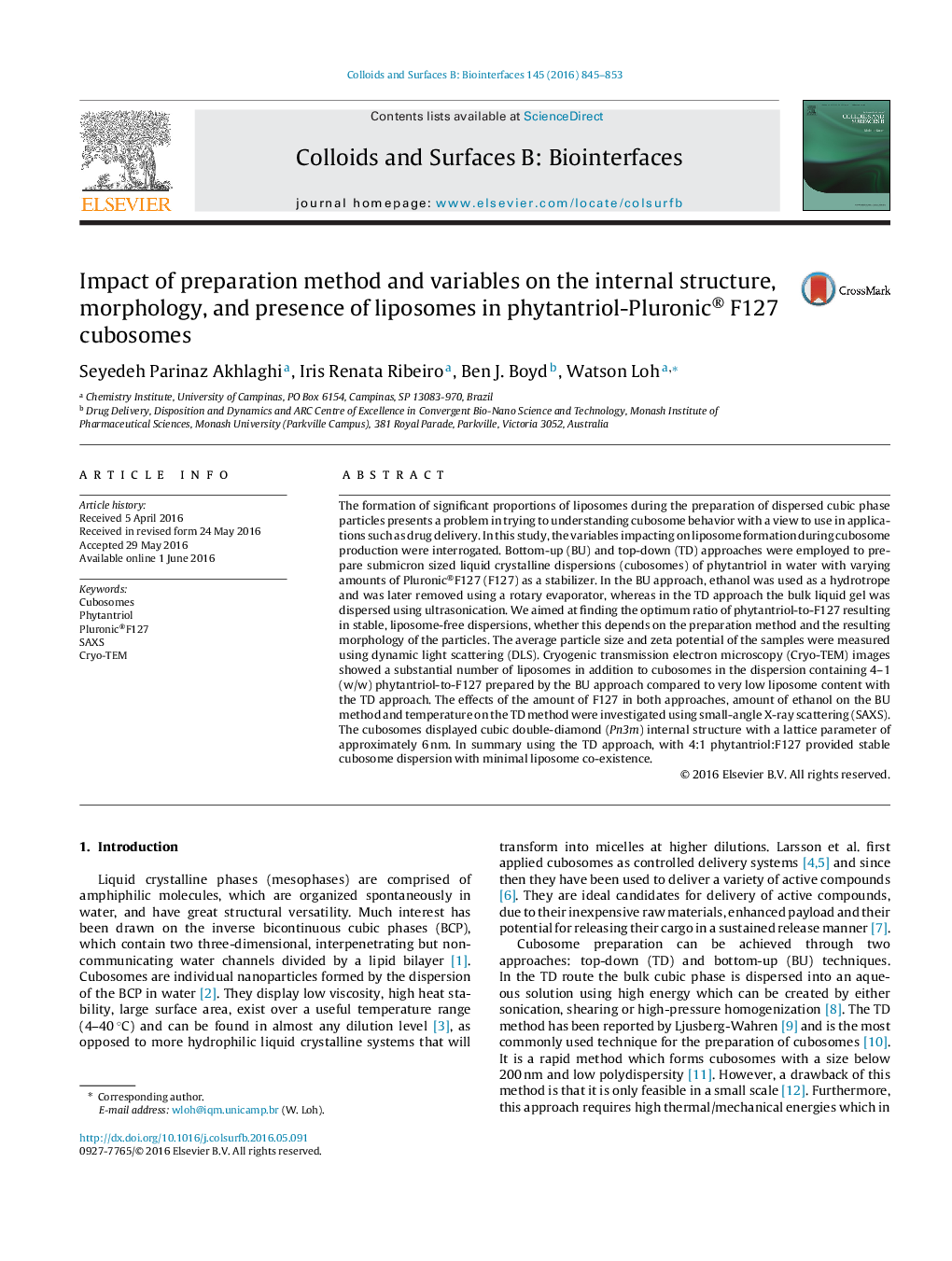| Article ID | Journal | Published Year | Pages | File Type |
|---|---|---|---|---|
| 599012 | Colloids and Surfaces B: Biointerfaces | 2016 | 9 Pages |
•Comparison of phytantriol cubosomes prepared by top-down and bottom-up approaches.•Cubosomes with 20% F127 had optimized enhanced colloidal stability over 4 months.•Cryo-TEM images of top-down cubosomes displayed fewer liposomes.•Robust approach to yield primarily cubosomes in dispersions.
The formation of significant proportions of liposomes during the preparation of dispersed cubic phase particles presents a problem in trying to understanding cubosome behavior with a view to use in applications such as drug delivery. In this study, the variables impacting on liposome formation during cubosome production were interrogated. Bottom-up (BU) and top-down (TD) approaches were employed to prepare submicron sized liquid crystalline dispersions (cubosomes) of phytantriol in water with varying amounts of Pluronic®F127 (F127) as a stabilizer. In the BU approach, ethanol was used as a hydrotrope and was later removed using a rotary evaporator, whereas in the TD approach the bulk liquid gel was dispersed using ultrasonication. We aimed at finding the optimum ratio of phytantriol-to-F127 resulting in stable, liposome-free dispersions, whether this depends on the preparation method and the resulting morphology of the particles. The average particle size and zeta potential of the samples were measured using dynamic light scattering (DLS). Cryogenic transmission electron microscopy (Cryo-TEM) images showed a substantial number of liposomes in addition to cubosomes in the dispersion containing 4–1 (w/w) phytantriol-to-F127 prepared by the BU approach compared to very low liposome content with the TD approach. The effects of the amount of F127 in both approaches, amount of ethanol on the BU method and temperature on the TD method were investigated using small-angle X-ray scattering (SAXS). The cubosomes displayed cubic double-diamond (Pn3m) internal structure with a lattice parameter of approximately 6 nm. In summary using the TD approach, with 4:1 phytantriol:F127 provided stable cubosome dispersion with minimal liposome co-existence.
Graphical abstractFigure optionsDownload full-size imageDownload as PowerPoint slide
